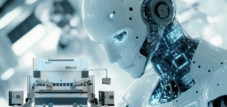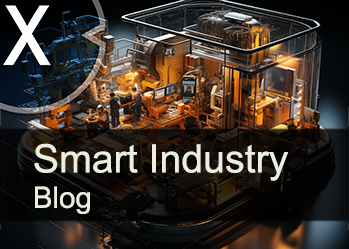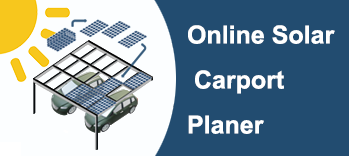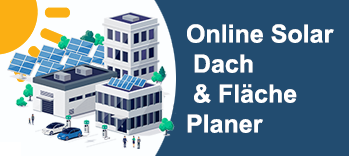China's strategy reveals the failure of Western economic policy using the example of battery storage
Xpert pre-release
Language selection 📢
Published on: October 25, 2025 / Updated on: October 25, 2025 – Author: Konrad Wolfenstein

China's strategy reveals the failure of Western economic policy using the example of battery storage – Image: Xpert.Digital
Europe's battery dilemma: Strategic failure in the shadow of Chinese dominance
Diagnosis of a crisis: Robin Zeng's unvarnished criticism of Europe's battery industry
Robin Zeng, the Chinese global battery market leader,'s criticism of the European battery industry goes to the heart of a fundamental economic policy misdevelopment. In a remarkable interview with Norwegian hedge fund manager Nicolai Tangen, offered a diagnosis that goes far beyond polite diplomatic platitudes. His statement that Europeans are currently making almost all the mistakes simultaneously is not an exaggerated polemic, but rather a sober description of the state of an industry that is in the process of losing one of its most important future technologies to non-European competitors.
Zeng's criticism focuses on three fundamental points. First, European battery manufacturers have incorrect design concepts. Second, they work with incorrect processes. Third, they use incorrect equipment. This triad of deficiencies makes large-scale production virtually impossible. They did not arise overnight, but are the result of years of neglecting a key technology. Zeng's assertion that Europeans are making all the mistakes simultaneously is a harsh but fair diagnosis. Incorrect design concepts indicate a lack of technological competence. Incorrect processes demonstrate a lack of production know-how. Incorrect equipment indicates insufficient investment and poor planning. These three deficiencies combined make competitive mass production impossible.
The frightening reality: China's overwhelming dominance and Europe's empty promises
The magnitude of this problem can hardly be overestimated. With a market share of approximately 38 percent, CATL controls more than a third of the global market for electric vehicle batteries. This dominant market share makes the company almost twice as large as the second-largest manufacturer, BYD, also from China, which has a share of approximately 18 percent. South Korean manufacturers, led by LG Energy Solution with around 10 percent, follow at a considerable distance. Europe, on the other hand, has virtually no significant independent battery manufacturers of global standing. This market structure did not arise by chance, but is the result of targeted industrial policy decisions made in China more than 15 years ago.
The consequences of these structural deficits are reflected in the sobering reality of European battery production. While production capacities of 2,000 gigawatt hours were originally announced for 2030, the Fraunhofer Institute for Systems and Innovation Research realistically estimates this at only 800 to 1,100 gigawatt hours. Demand for the same period is estimated at 800 to 1,300 gigawatt hours. In 2024, Europe achieved a production capacity of just around 124 gigawatt hours.
These figures illustrate a fundamental discrepancy between expectations and reality. Of the announced projects, 700 gigawatt hours of capacity have already failed or been significantly delayed, a third of them in Germany alone. The Swedish company Northvolt, once celebrated as a European beacon of hope and supported with 600 million euros in German subsidies, filed for bankruptcy in March 2025. The company's debts amounted to approximately nine billion US dollars. This collapse was not a sudden event, but the result of a chain of production problems, quality defects, and delivery delays that ultimately shook investor confidence.
Northvolt's insolvency symbolizes a larger problem. European players have failed to close the technological gap with Asian manufacturers. Experts estimate that Chinese and South Korean battery manufacturers are 15 to 20 years behind. This lag is not primarily a matter of technological brilliance, but primarily a consequence of differing industrial policy priorities and investment cycles. China recognized the strategic importance of battery technology for the energy transition and electromobility early on and systematically invested in the development of a complete value chain. Northvolt's insolvency is symptomatic of this failure. Although the company received government support and private investment, the framework for successful scaling was not in place. Technological problems could have been overcome with more patience, expertise, and financial resources. Instead, the pressure to deliver results quickly, combined with rising costs and weak demand, led to the insolvency. This case demonstrates that isolated support without a coherent overall industrial policy concept is doomed to failure.
The contested supply chain: China's strategic control from raw materials to cell production
Chinese dominance extends not only to battery cell production itself, but encompasses the entire supply chain. China controls approximately 80 percent of global lithium-ion battery production. For lithium iron phosphate batteries, a more cost-effective chemical variant, the Chinese share is over 98 percent. This position is even more pronounced in raw material extraction and processing. Chinese companies control 29 percent of global lithium mining, although the largest deposits are located in Australia and Chile. The Chinese share in refining and processing is increasing dramatically. Europe, in contrast, owns virtually no significant share of foreign lithium deposits and is almost 100 percent dependent on imports.
This strategic dependence is the result of conscious political decisions. With the Made in China 2025 initiative, the Chinese government has presented a comprehensive plan to achieve technological leadership in key industries. The battery industry is at the heart of this strategy. State support is provided at several levels. Direct subsidies for manufacturers like BYD rose from approximately €220 million in 2020 to €2.1 billion in 2022. However, these figures capture only a fraction of the actual support. Conservative estimates place China's total industrial subsidies in 2019 at approximately €221 billion, equivalent to 1.73 percent of gross domestic product.
More than 99 percent of listed companies in China received direct government subsidies in 2022. In addition, there are preferential loans from state-owned banks, preferential access to raw materials, tax incentives, and a coordinated public procurement policy. China also plans to invest an additional €750 million in the research and development of solid-state batteries, the next generation of energy storage. These sums stand in stark contrast to European investments. While China is creating a coherent and long-term ecosystem, Europe is responding in a fragmented, short-term, and often too late manner. The Chinese strategy is based not only on government support but also on a massive expansion of training capacities. Universities have been specifically provided with resources, research centers have been created, and collaboration between academia and industry has been institutionalized.
Raw material dependence further exacerbates the situation. Europe has no significant lithium reserves of its own and is almost entirely dependent on imports. While the US and China are expanding their control over the supply chain by acquiring mines and refineries in Australia, Chile, Indonesia, and the Democratic Republic of Congo, Europe is lagging behind. While the European Critical Raw Materials Act aims to extract at least 10 percent of strategic raw materials domestically and process 40 percent by 2030, the road to achieving this goal is rocky.
New: Patent from the USA – Install solar parks up to 30% cheaper and 40% faster and easier – with explanatory videos!

New: Patent from the USA – Install solar parks up to 30% cheaper and 40% faster and easier – with explanatory videos! - Image: Xpert.Digital
At the heart of this technological advancement is the deliberate departure from conventional clamp fastening, which has been the standard for decades. The new, more time- and cost-effective mounting system addresses this with a fundamentally different, more intelligent concept. Instead of clamping the modules at specific points, they are inserted into a continuous, specially shaped support rail and held securely. This design ensures that all forces occurring—be they static loads from snow or dynamic loads from wind—are evenly distributed across the entire length of the module frame.
More about it here:
Why Europe's battery industry has no chance against the USA and China – How Europe can still regain its battery sovereignty
European Achilles heels: high costs, shortage of skilled workers and US competition
However, Europe's structural competitive disadvantages go beyond the level of subsidies. Energy costs play a key role. Following the introduction of the US Inflation Reduction Act in August 2022, the average price of battery packs in Europe was already about eight percent higher than in the US and 33 percent higher than in China. The energy crisis resulting from the war in Ukraine dramatically exacerbated this situation. Battery prices in the EU rose by a further 10 to 12 percent, while the US was able to reduce costs to Chinese levels through massive tax breaks and subsidies. The resulting price difference of approximately 40 percent makes competitive production in Europe virtually impossible.
The US Inflation Reduction Act, with a volume of approximately $135 billion for electric vehicles, critical minerals, and battery production, has fundamentally changed the global competitive landscape. The law ties tax breaks and subsidies to local production and supply chains. For example, 40 percent of battery minerals must come from the US or from countries with free trade agreements. Half of all battery components must be manufactured in North America. These protectionist measures have already had a concrete impact on Europe. Tesla relocated its planned battery cell production from Grünheide in Brandenburg to the US. The German site was originally intended to have a peak capacity of over 50 gigawatt hours per year. These plans were abandoned in 2023 due to the more attractive tax conditions in the US.
A central point of Zeng's criticism concerns the European education system. His assertion that Europe is not training enough creative specialists in the field of electrochemistry hits a sensitive point. The number of students enrolled in electrical engineering and related STEM subjects has been declining in Germany for years. At the same time, the baby boomers are reaching retirement age, exacerbating the shortage of skilled workers. Many students are turning away from technical degree programs because they expect faster careers and higher incomes in other fields, such as finance. This development is particularly problematic because battery technology is a highly specialized field that requires years of training and practical experience. CATL alone employs approximately 20,000 experts in research and development. This number exceeds the total academic capacity of many European countries in this field. More than a decade ago, Zeng advised then-Chancellor Angela Merkel to invest in the training of electrochemistry students. This recommendation largely went unheeded.
Europe's response to these challenges has so far been inadequate. While various funding instruments have been created, their implementation suffers from bureaucratic hurdles, regulatory uncertainty, and a lack of coordination among member states. While the European Battery Alliance (EBA250) has set ambitious goals, practical implementation lags behind the announcements. Many projects fail during the financing phase because investors are risk-averse in the face of global competition. High capital costs, rising construction costs, and uncertainty about future demand further hamper private investment.
The Strategic Embrace: CATL's Expansion and Europe's Dependency Trap
The consequences of these failures are evident today in the dependence of European automakers on Chinese suppliers. BMW has been working with CATL since 2012. Mercedes-Benz and Volkswagen are also major customers. CATL has systematically expanded its presence in Europe. The company has been producing battery cells with a capacity of 50 gigawatt hours in Arnstadt, Thuringia, since 2022 and employs 1,700 people. In Debrecen, Hungary, a factory with a planned capacity of 100 gigawatt hours is currently being built at an investment of €7.3 billion, creating approximately 9,000 jobs. In Spain, CATL is planning another plant with a capacity of 50 gigawatt hours together with Stellantis.
This expansion of Chinese manufacturers into Europe is a logical consequence from the Chinese perspective. On the one hand, it circumvents potential trade barriers and tariffs, and on the other, it positions itself close to its most important customers. From a European perspective, however, this development is ambivalent. While jobs and value creation are created in Europe, technological control and profits largely remain with Chinese companies. European automakers are effectively becoming assemblers who source the crucial components of their products from a supplier that could potentially also become a competitor.
This danger is not hypothetical. CATL is already developing its own platforms for electric vehicles, the CATL Intelligent Integrated Cockpit, which includes not only the battery but also cooling and braking systems, powertrain elements, and suspension systems. This puts the company in direct competition with platforms such as Volkswagen's modular electrification platform (MEB). What begins as a supply relationship today could turn into a cutthroat competition tomorrow, with European manufacturers at a structural disadvantage.
The development of solid-state batteries, considered the next generation of technology, is reinforcing these concerns. China plans to have a production capacity of 156 gigawatt hours for this technology by 2030. The US will reach approximately 120 gigawatt hours, while Europe is expected to reach only 33 gigawatt hours. In 2024, the Chinese government launched the China All-Solid-State Battery Collaborative Innovation Platform, an alliance of leading battery and automakers, to systematically advance the commercialization of this technology. European manufacturers such as Mercedes-Benz and Stellantis are trying to catch up through partnerships with US startups such as Factorial Energy, but the gap remains significant.
Battery dependency: How Europe is putting its industry at risk
These conflicts between economic necessity and ecological and social concerns are characteristic of the European situation. While China pragmatically pushes through raw material projects and the US creates incentives through subsidies, Europe struggles with lengthy approval processes, strict environmental regulations, and a skeptical public. These factors are not negative per se, but they do complicate the rapid development of domestic capacities in a global race where speed is increasingly crucial.
The geopolitical dimensions of this dependence are significant. The US placed CATL on a Pentagon blacklist in 2025 and plans to generally prohibit the purchase of Chinese batteries by government agencies starting in 2027. Europe is caught between economic ties with China and security concerns. The energy crisis has shown how vulnerable economies become when they depend on individual suppliers. For gas, it was Russia; for batteries, it could be China. A hypothetical export ban or politically motivated shortage could plunge the European automotive industry and the energy transition into an existential crisis.
The economic costs of this dependence are already being felt. According to calculations by the management consultancy Deloitte, in 2024 only 13 percent of the batteries produced worldwide came from European factories, 97 percent of which came from subsidiaries of Chinese and South Korean manufacturers. Only one European manufacturer produced its own batteries to a limited extent. China accounted for 70 percent of global production. Sales of electric vehicle batteries in Europe are expected to increase from approximately €16 billion to €54 billion between 2024 and 2030. However, this growing market will be largely controlled by non-European players if current trends continue.
The question is not whether Europe should establish its own battery production, but how it can still succeed. The current strategy of relying on market forces and moderate support has proven inadequate. The combination of high energy costs, lower subsidies than in the US or China, bureaucratic hurdles, and a shortage of skilled workers makes Europe an unattractive location for capital-intensive battery production. Without fundamental changes in industrial policy, Europe will cement its dependence.
Setting the course for the future: A strategy to regain battery sovereignty
A successful strategy would have to encompass several elements. First, it requires massive, long-term financial support that can compete with American and Chinese subsidies. European budget rules would have to be relaxed to enable strategic investments. Second, bureaucracy must be radically simplified and accelerated. Approval procedures that take years are not competitive in a dynamic technology field. Third, energy costs must be reduced, for example through targeted electricity price subsidies for energy-intensive industries or the accelerated expansion of renewable energies with industrial priority.
Look, this little detail saves up to 40% installation time and costs up to 30% less. It's from the USA and patented.

NEW: ready -to -mount solar systems! This patented innovation accelerates your solar construction massively
The heart of ModuRack 's innovation is its departure from conventional clamp fastening. Instead of clamps, the modules are inserted and held in place by a continuous support rail.
More about it here:
Your partner for business development in the field of photovoltaics and construction
From industrial roof PV to solar parks to larger solar parking spaces
☑️ Our business language is English or German
☑️ NEW: Correspondence in your national language!
I would be happy to serve you and my team as a personal advisor.
You can contact me by filling out the contact form or simply call me on +49 89 89 674 804 (Munich) . My email address is: wolfenstein ∂ xpert.digital
I'm looking forward to our joint project.
☑️ EPC services (engineering, procurement and construction)
☑️ Turnkey project development: Development of solar energy projects from start to finish
☑️ Location analysis, system design, installation, commissioning as well as maintenance and support
☑️ Project financier or placement of investors
Our China expertise in business development, sales and marketing
Industry focus: B2B, digitalization (from AI to XR), mechanical engineering, logistics, renewable energies and industry
More about it here:
A topic hub with insights and expertise:
- Knowledge platform on the global and regional economy, innovation and industry-specific trends
- Collection of analyses, impulses and background information from our focus areas
- A place for expertise and information on current developments in business and technology
- Topic hub for companies that want to learn about markets, digitalization and industry innovations























